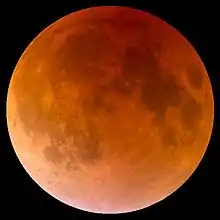July 2020 lunar eclipse
A penumbral lunar eclipse took place on 5 July 2020, the third of four lunar eclipses in 2020.
| Penumbral Lunar Eclipse 5 July 2020 | |
|---|---|
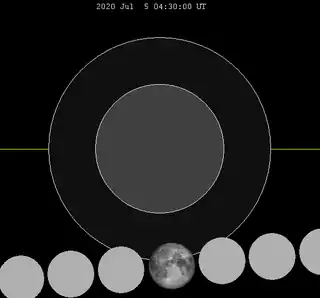 The moon will imperceptibly dim as it passes through the Earth's southern penumbral shadow | |
| Series (and member) | 149 (3 of 72) |
| Duration (hr:mn:sc) | |
| Penumbral | 2:45:00 |
| Contacts | |
| P1 | 3:07:23 UTC |
| Greatest | 4:30:00 |
| P4 | 5:52:23 |
Visibility
The eclipse was visible during moonrise from some parts of North America, some parts of the Pacific Ocean and New Zealand, completely visible in Central and South America, some parts of North America, some parts of Western Africa as well as the extreme part of the South-West coast of South Africa, and visible during moonset from southwestern Europe, most of Africa (except Somalia, Djibouti, Eritrea and a strip of North Eastern Sudan, Egypt and Ethiopia), and some parts of the Indian Ocean.
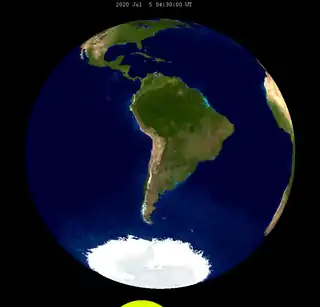 View of earth from moon during greatest eclipse |
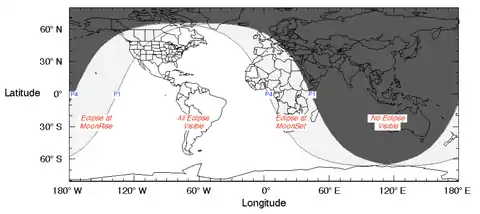 Visibility map |
Gallery
.jpg.webp) Springfield, OR, 4:22 UTC
Springfield, OR, 4:22 UTC
Related eclipses
Eclipses of 2020
Lunar year series
| Lunar eclipse series sets from 2016–2020 | ||||||||
|---|---|---|---|---|---|---|---|---|
| Descending node | Ascending node | |||||||
| Saros | Date | Type Viewing |
Gamma | Saros | Date Viewing |
Type Chart |
Gamma | |
| 109 | 2016 Aug 18 |
Penumbral |
1.5641 | 114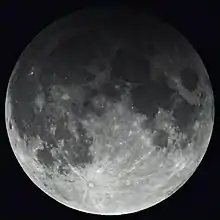 |
2017 Feb 11 |
Penumbral |
-1.0255 | |
119 |
2017 Aug 07 |
Partial |
0.8669 | 124 |
2018 Jan 31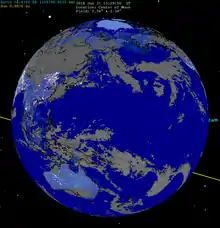 |
Total |
-0.3014 | |
129_(43696968392)_(cropped).jpg.webp) |
2018 Jul 27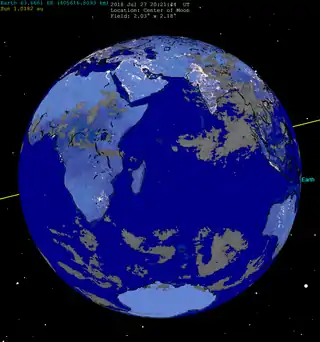 |
Total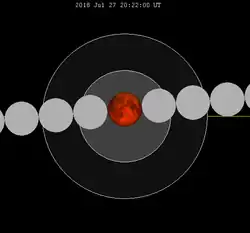 |
0.1168 | 134_(cropped).jpg.webp) |
2019 Jan 21 |
Total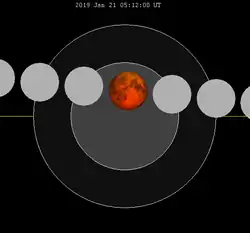 |
0.3684 | |
139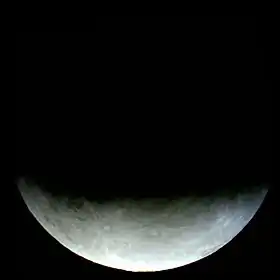 |
2019 Jul 16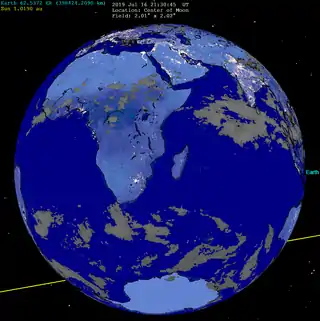 |
Partial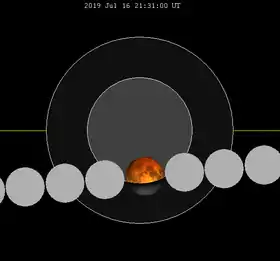 |
-0.6430 | 144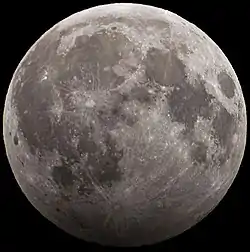 |
2020 Jan 10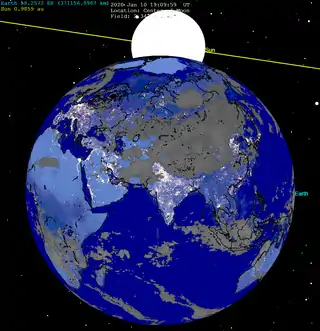 |
Penumbral |
1.2406 | |
| 149 | 2020 Jul 05 |
Penumbral |
-1.3639 | |||||
| Last set | 2016 Sep 16 | Last set | 2016 Mar 23 | |||||
| Next set | 2020 Jun 05 | Next set | 2020 Nov 30 | |||||
Saros series
It is part of Saros cycle 149.
Half-Saros cycle
A lunar eclipse will be preceded and followed by solar eclipses by 9 years and 5.5 days (a half saros).[1] This lunar eclipse is related to two partial solar eclipses of Solar Saros 156.
| July 1, 2011 | July 11, 2029 |
|---|---|
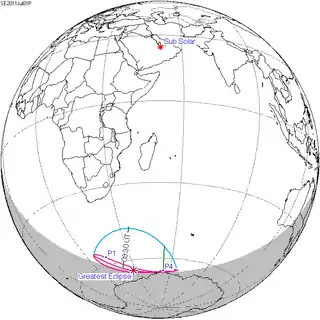 |
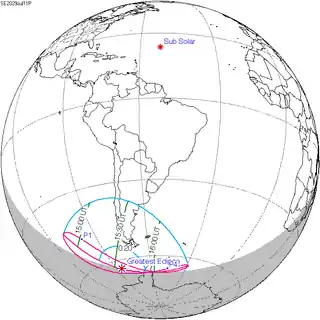 |
See also
- List of lunar eclipses and List of 21st-century lunar eclipses
References
- Mathematical Astronomy Morsels, Jean Meeus, p.110, Chapter 18, The half-saros
